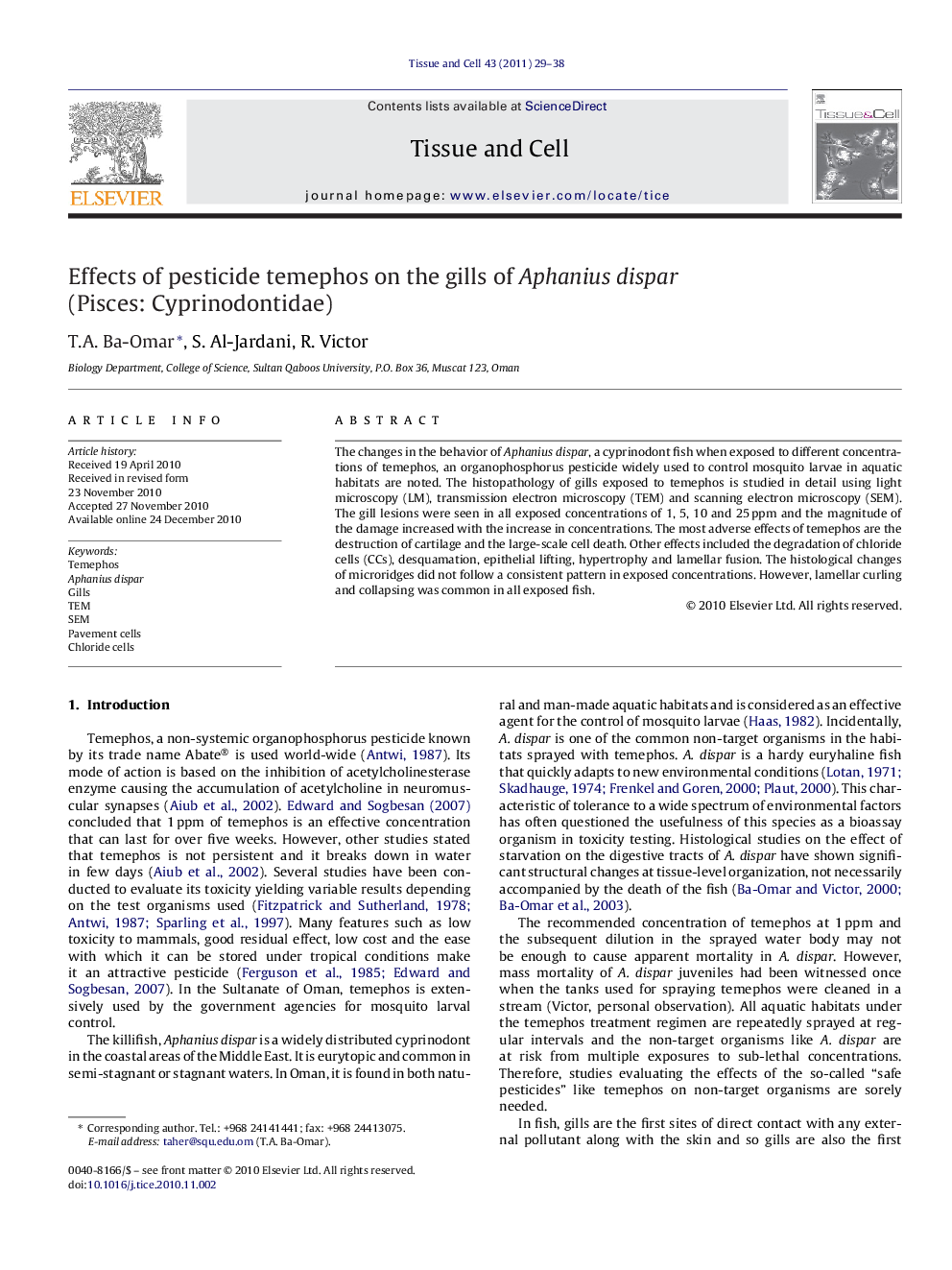| Article ID | Journal | Published Year | Pages | File Type |
|---|---|---|---|---|
| 10959680 | Tissue and Cell | 2011 | 10 Pages |
Abstract
The changes in the behavior of Aphanius dispar, a cyprinodont fish when exposed to different concentrations of temephos, an organophosphorus pesticide widely used to control mosquito larvae in aquatic habitats are noted. The histopathology of gills exposed to temephos is studied in detail using light microscopy (LM), transmission electron microscopy (TEM) and scanning electron microscopy (SEM). The gill lesions were seen in all exposed concentrations of 1, 5, 10 and 25Â ppm and the magnitude of the damage increased with the increase in concentrations. The most adverse effects of temephos are the destruction of cartilage and the large-scale cell death. Other effects included the degradation of chloride cells (CCs), desquamation, epithelial lifting, hypertrophy and lamellar fusion. The histological changes of microridges did not follow a consistent pattern in exposed concentrations. However, lamellar curling and collapsing was common in all exposed fish.
Related Topics
Life Sciences
Agricultural and Biological Sciences
Agricultural and Biological Sciences (General)
Authors
T.A. Ba-Omar, S. Al-Jardani, R. Victor,
